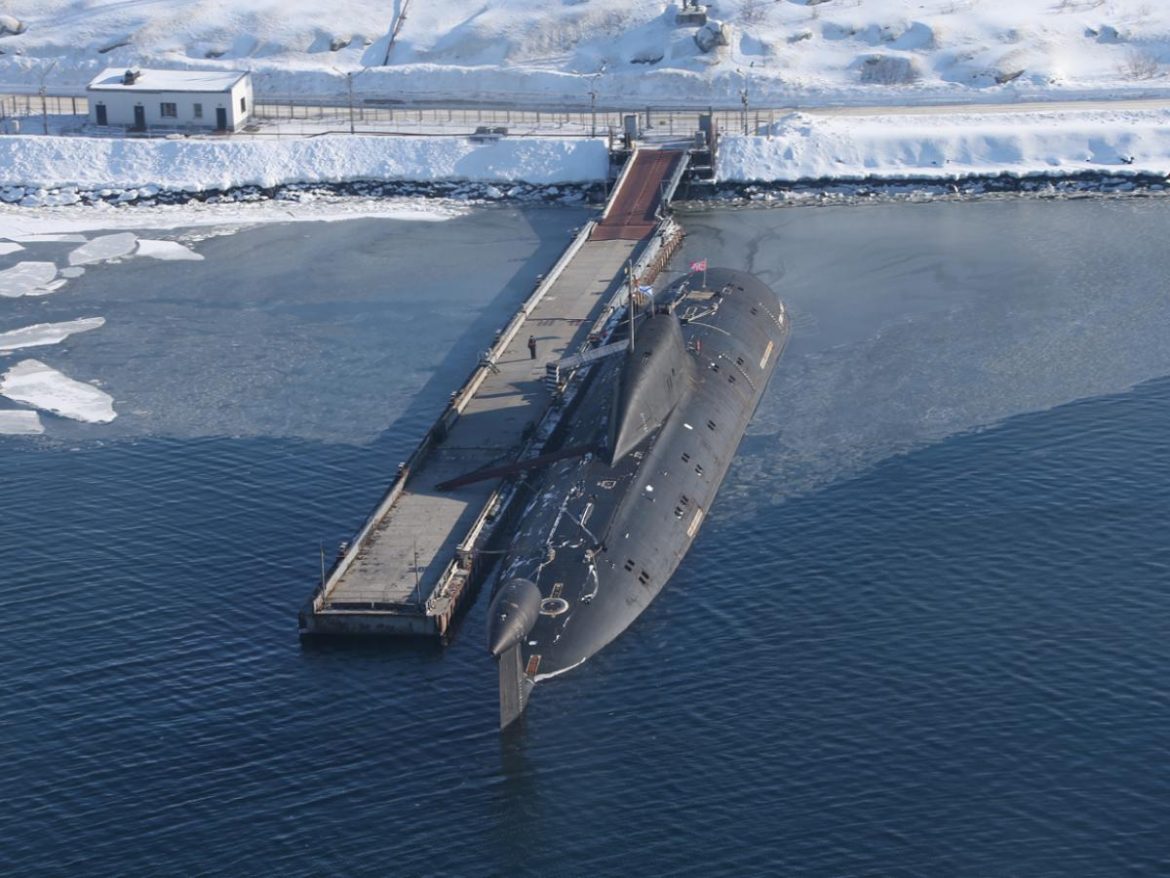Russia has quietly taken another step in expanding its underwater military power with the launch of its highly secretive nuclear-powered submarine, Khabarovsk.
This vessel is specially built to carry the next-generation Poseidon nuclear drone system, marking a major development in Moscow’s naval capabilities.
The launch ceremony took place in Severodvinsk, overseen by Defense Minister Andrei Belousov, according to the Russian Ministry of Defense.
Launch Ceremony at Sevmash Shipyard
The Khabarovsk slipped into the water from the covered dock at the Sevmash Production Association, one of Russia’s key shipbuilding hubs.
The submarine was designed by the Rubin Central Design Bureau for Marine Engineering and is intended to carry out critical missions for the Russian Navy using advanced underwater weapons.
During the ceremony, Defense Minister Belousov expressed his gratitude to the teams involved in its construction:
“I want to thank everyone who took part in creating this submarine for their conscientious and high-quality work.
The vessel still has to complete a series of sea trials.
I wish the crew and the delivery team success in this phase.”
Belousov described Khabarovsk as a “heavy nuclear missile cruiser”, highlighting its strategic importance.
Strategic Role and Arctic Operations
The new submarine is expected to bolster Russia’s maritime defense and safeguard its interests across global waters.
Admiral Alexander Moiseev, Commander-in-Chief of the Russian Navy, noted that Khabarovsk is capable of operating independently in Arctic ice conditions as well as alongside other ships in the Northern Fleet.
Its design reflects Russia’s focus on ensuring naval presence in harsh, remote regions.
The Secretive Nature of Khabarovsk
Even in the age of satellite imagery and instant reporting, Khabarovsk remains shrouded in mystery.
According to the Telegram channel Militarist, there are no official photos or detailed schematics available.
The only glimpses of the submarine so far are symbolic drawings from its 2014 keel-laying ceremony and small commemorative items for attendees.
Even the Defense Ministry’s launch footage carefully avoids showing technical details, with the submarine’s propeller hidden under a protective cover.
“Everything currently available online are only speculative depictions of what the Khabarovsk might look like,” the channel noted.
Built for the Poseidon Nuclear Drone
Khabarovsk was specifically designed to carry Poseidon, the nuclear-powered underwater drone system, making it a critical part of Russia’s strategic arsenal.
Former Chief of the Navy’s General Staff, Admiral Viktor Kravchenko, confirmed its purpose, while military analyst Vladislav Shurygin added that this submarine will be the second Poseidon carrier after the Belgorod, which entered service in July 2022.
War correspondent Yevgeny Lisitsyn reported that Khabarovsk can carry up to twelve nuclear torpedoes, emphasizing its offensive potential.
Poseidon’s Capabilities
On October 29, Russian President Vladimir Putin announced the successful completion of Poseidon’s trials.
Available information suggests that this unmanned nuclear drone can cover 3,300 nautical miles from the Norwegian Sea to the U.S. East Coast in 66 hours at speeds of 50 knots, underlining the system’s long-range, high-speed capabilities.
Khabarovsk’s launch signals a major milestone in Russia’s naval strategy, combining cutting-edge nuclear technology with strategic reach, while keeping much of its design and operation under tight secrecy.
Share on Facebook «||» Share on Twitter «||» Share on Reddit «||» Share on LinkedIn
